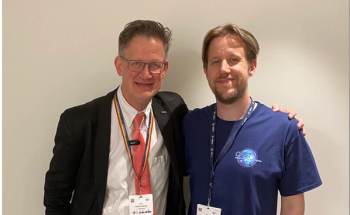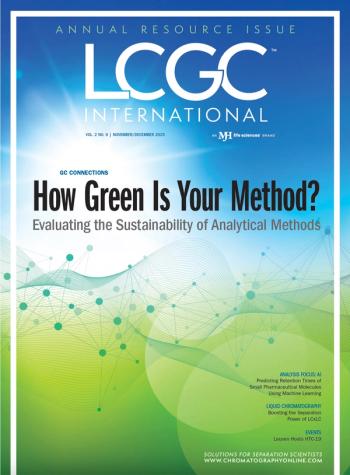
HPLC 2015 Tuesday Morning Sessions
HPLC 2015 Tuesday Morning Sessions
08:15 – 08:25: AW03 – Simon Widmer Award
Plenary Lecture: 08.30 - Detlef Günther: Element Analysis of Small and Smaller Objects by Inductively Coupled Plasma Mass Spectrometry and Laser Ablation-ICPMS
Room 1, Level 1
Session 13: Retention/Selectivity
Room 1, Level 1
09:20 - Pavel Jandera: ChromSoc Award – Martin Medal: Role of Water in Aqueous Normal Phase
09:50 - EvaTyteca: Possibilities of Retention Modelling and Computer Assisted Method Development in SFC
10:10 - George Horvai: Adsorption on Weak Ion Exchangers from Organic Solvents Studied by a Robust Isotherm Method
Session 14: Supercritical Fluid Chromatography
Room 2, Level 0
09:20-Jean-Luc Veuthey: New insights in SFC and SFC-MS for the analysis of drug substances
09:50- Caroline West: Development of an Achiral SFC-MS Screening Strategy for Impurity Profiling of Drug Candidates
10:10- MiroslavLísa: Lipidomics: Ultrahigh-Performance Supercritical Fluid Chromatography – Mass Spectrometry as a New Tool for High-Throughput and Comprehensive Analysis of Lipids
Session 15: Biomarkers
Room 3 + 4, Level 0
09:20- Rainer Bischoff: Biomarker Discovery and Validation for Cervical Cancer
09:50- Laszlo Prokai: A Comprehensive Assessment of Chromatographic Isotope Effects Upon Isotope-coded Derivatization for Quantitative Metabolomics by LC–MS
10:10- Yu Cheng: Targeted Analysis of 16 Endogenous Carbohydrates for Expanded Metabolomics Approach Using HILIC–MS–MS and an Application in Ovarian Cancer
09:50 – 10:35: Tutorial 04: Ionization Techniques for Mass Spectrometry
Room 5 + 6, Level 3
Session 16: Hydrophilic Interaction Chromatography
Room 1, Level 1
11:20 - David McCalley: Investigation of Peak Shape and Retention in Hydrophilic Interaction Chromatography over an Extended pH Range
11:50 - Dierdre Cabooter: Evaluation of Kinetic Performance Differences between Hydrophilic Interaction and Reversed-Phase Liquid Chromatography under Conditions of Identical Packing
12:10 - TohruIkegami: Drastic Improvement of HILIC Columns in Terms of Hydrophilicity by Polymer-Coating Functionalization
Session 17: Biopharmaceuticals
Room 2, Level 0
11:20 - Dwight Stoll: Online Selective Comprehensive Two-Dimensional Liquid Chromatography–Mass Spectrometry for Efficient, High Resolution Characterization of Monoclonal Antibodies
11:50 - Gaelle Cousset: D-PES Methodology for the Analysis of Therapeutic Antibodies
12:10 - Jean-Pierre Chervet: Controlled Reduction of Disulphide Bonds in Protein Therapeutics Using an Electrochemical Reactor Cell Online with MS
Session 18: Phosphoproteomics
Room 3 + 4, Level 0
11:20 - Alexander Leitner: Nanocast Microspheres for Phosphopeptide Enrichment using Metal Oxide Affinity Chromatography
11:50 - Jana Krenkova: Inorganic Nanofibers Prepared by Forcespinning Technology for Selective and Efficient Enrichment of Phosphopeptides
12:10 - Günther Bonn: New Sample Preparation Methods for the Selective Enrichment of Phosphorylated Peptides and Proteins
Newsletter
Join the global community of analytical scientists who trust LCGC for insights on the latest techniques, trends, and expert solutions in chromatography.



